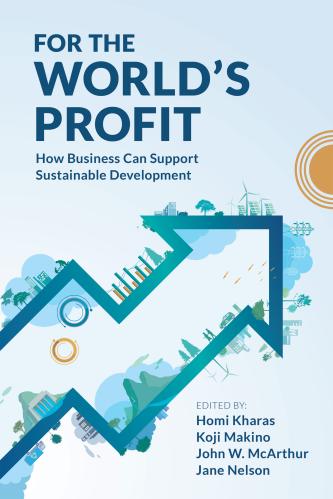Delegates are entering their second week of negotiations at the 17th Conference of Parties (COP-17) to the U.N. Framework Convention on Climate Change (UNFCCC). One might hope that 17 meetings would be able to produce substantial remedies for the ills of the planet, but it appears that a grand resolution will remain elusive. Nevertheless, the conventional wisdom on how to approach climate protection has indeed shifted over the nearly two decades since the first international agreement on climate change was struck in Rio de Janeiro in 1992. From sustainable development through market mechanisms, there has been no lack of ideas as to how to best assure sufficient global emissions reductions to avoid major climatic risks.
Fortunately, it now appears that after many years of occasionally shrill and sometimes misinformed or misdirected argument, the perceived solutions are maturing into a set of principles that draw on ideas about green growth, clean technology, and low-carbon development. Problems with earlier approaches are myriad—to list just a few: relying too much on inherently weak international legal frameworks to do what is better achieved by national policies; ignoring areas where international cooperation can be helpful by enabling new norms or peer competition; demanding quantified cuts conceived in ways that created unacceptable uncertainty for individual countries; and addressing climate as an burdensome issue of environmental regulation instead of one to build strength in the economic, industrial, and development policies of individual countries. In contrast, the agenda of low-emissions development and green economic policy can and should be able to sidestep these pitfalls, although, as I discuss later, there remain substantial questions about measurement and execution. Nevertheless, they rightly re-cast the challenge of global energy transitions as core elements of economic and industrial policy and not simply the target or mandate of energy or climate policies. There are three clear dimensions of this transition:
- From a climate or emissions perspective, the challenge is to enable the global energy system to move onto a low-carbon trajectory. This process, however, has often been misconstrued as “steering” when it may be more robustly conceived as cultivating; new technologies can grow and spread on their own, but they need the right conditions.
- Such a trajectory implies deploying existing technologies now, which will require incentives and finance for individual private sector actors on both the supply and demand sides. This also implies vigorous domestic support embedded in industrial policy, and possibly international financing in nations that are capital constrained
- Such a trajectory also implies enabling future technologies in the years and decades to come. This will require long term credibility from national governments on their industrial priorities and also the need to foster diverse innovative applications of new technologies across development contexts.
Healthy economic growth is a topic around which developed, emerging, and developing economies can agree; the hope is to create a solid foundation upon which a genuinely low-carbon energy transition will be built. Embracing this idea could be particularly helpful in moving the international community beyond some of the obstacles they are currently confronting in Durban. First, this approach removes the unhelpful dichotomy between the developing and developed countries. By creating a desirable target for the future for all countries, rather than demands on only some, it can dissolve disagreements that are typical in a simple two-sided negotiation. Second, it embeds the energy transition in something all countries want: economic development and improving quality of life. Third, it refocuses attention on the true actors in the energy transition: individual firms in the private sector who will be the primary disbursers of capital across all development contexts.
The novelty in this approach is not the newness of any one component, but the perspective that such approaches might be fruitful. To ensure that they do not become yet another failed policy mantra, low-emissions development and green growth policies need to address three major gaps. First and most importantly, although the climate discourse has hitherto been driven primarily by national governments, large multilateral agencies, environmental groups, and relatively “top-down” organizations, individual firms are and will remain at the core of action and, therefore, need to be kept carefully involved in any studies or planned new policies at the national and international levels. A second task is to identify a set of metrics to help identify success in green growth and, by extension, to improve any failures, keeping in mind the central role of individual firms. Third, the possible roles of international institutions need careful thought. In this perspective, multilateral aid and international policy can be most effective when they respond to firm needs both for support on innovation and implementation.
These aspects of low-carbon energy transition can form the core of a global approach to mitigation. One question that arises, therefore, is what role the international policy negotiations can have in encouraging this process. Even beyond the heated discussions about the long-term form of an international climate agreement, progress in launching the Green Climate Fund and the Technology Mechanism could be helpful. However, to be most effective, these elements will be most effective if they address needs of individual firms in a wide variety of development contexts.
The above piece is one of several that Nathan Hultman, an attendee at the 2011 United Nations Climate Change Conference in Durban, South Africa, has written about topics discussed at the conference. Topics include the Clean Development Mechanism and the Kyoto Protocols.
The Brookings Institution is committed to quality, independence, and impact.
We are supported by a diverse array of funders. In line with our values and policies, each Brookings publication represents the sole views of its author(s).


Commentary
Op-ed“Low-Emissions Development” and the New Sustainability
December 6, 2011